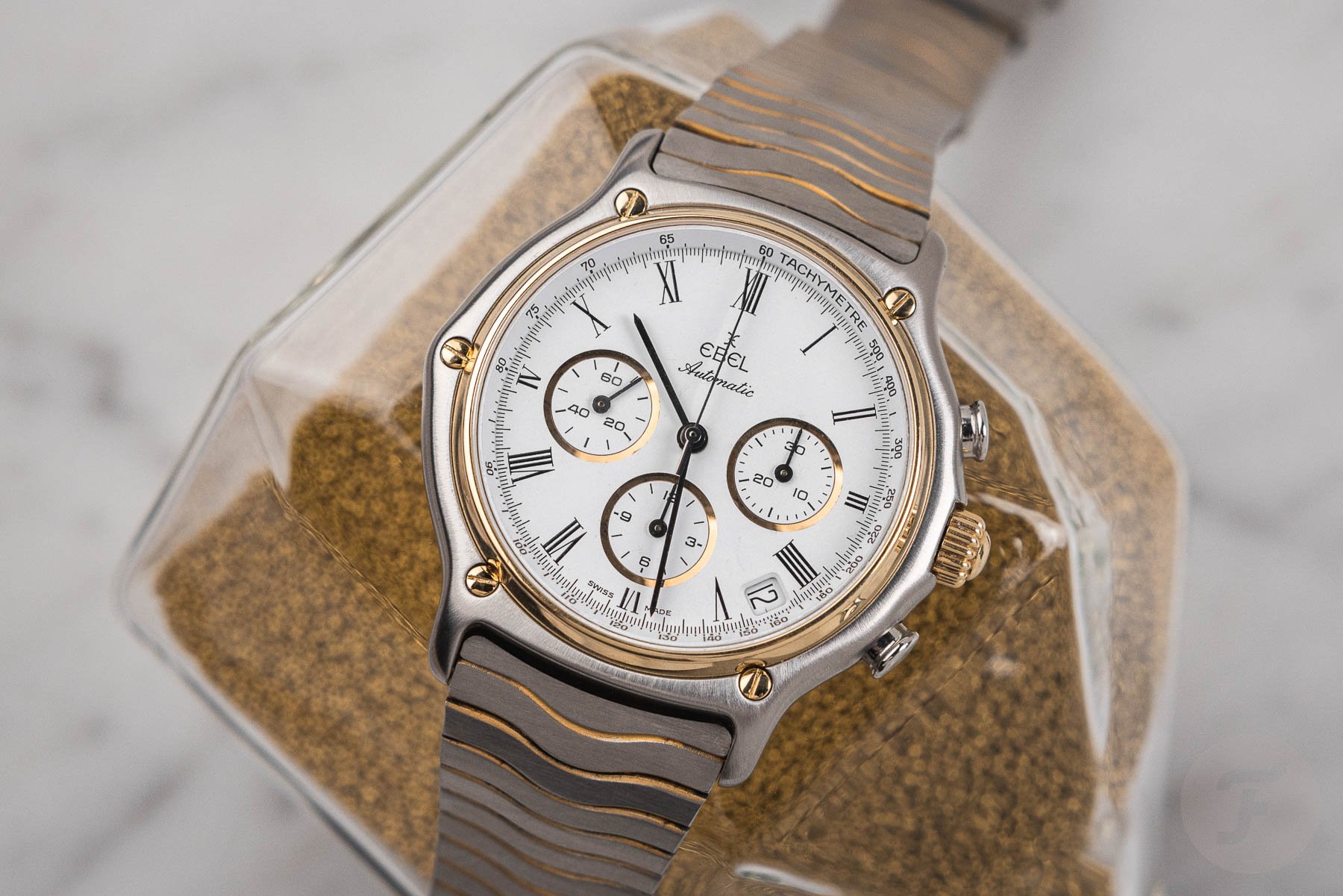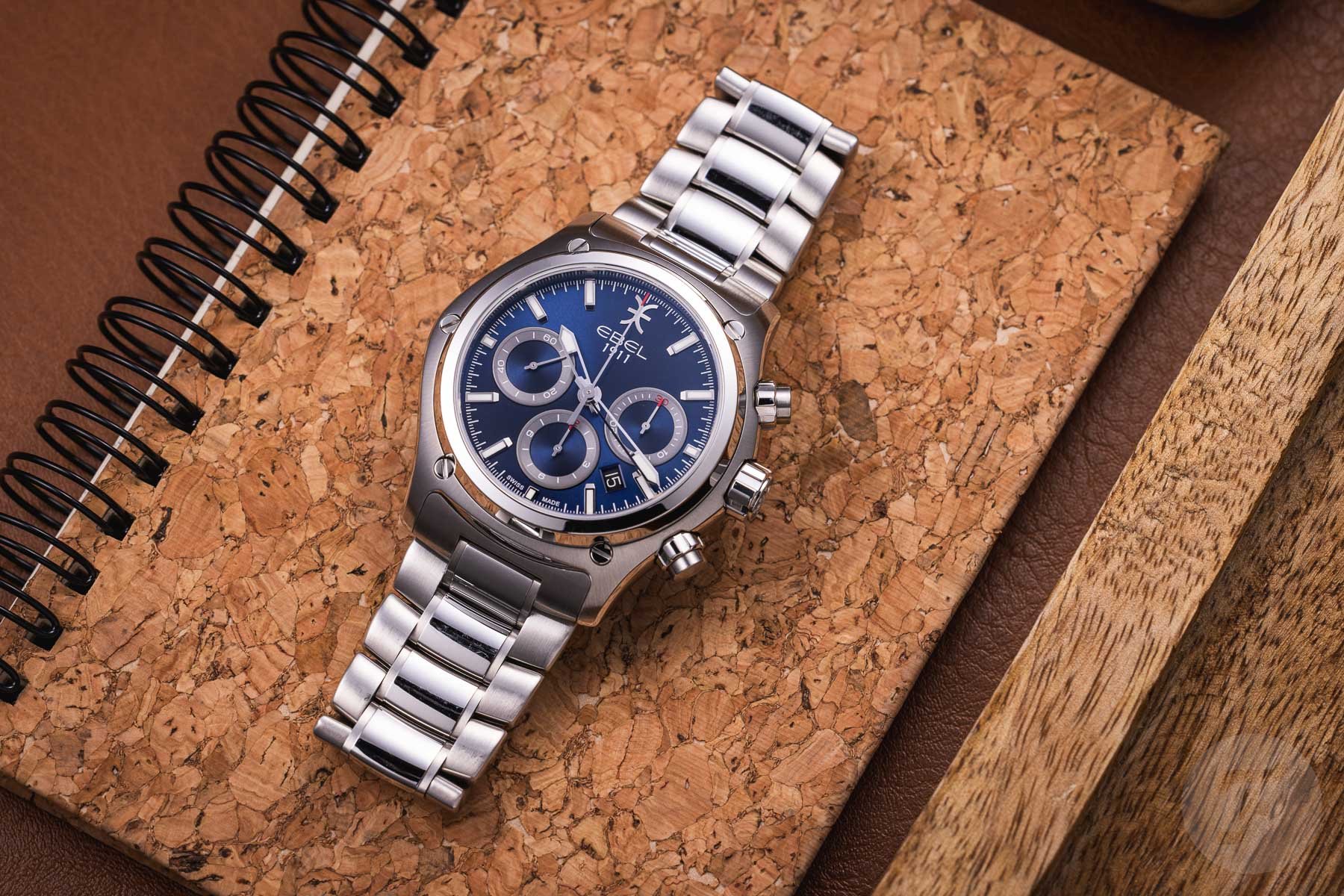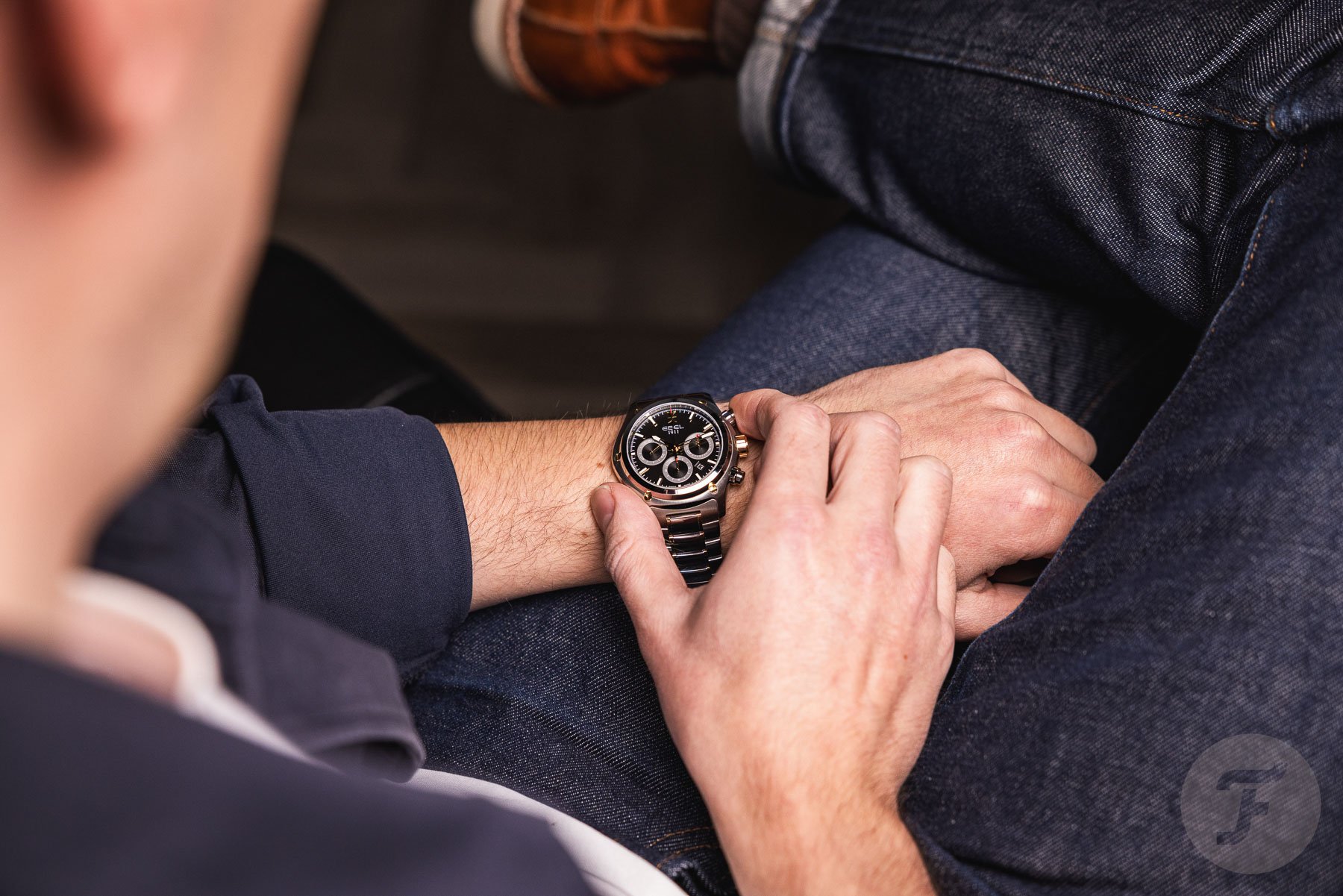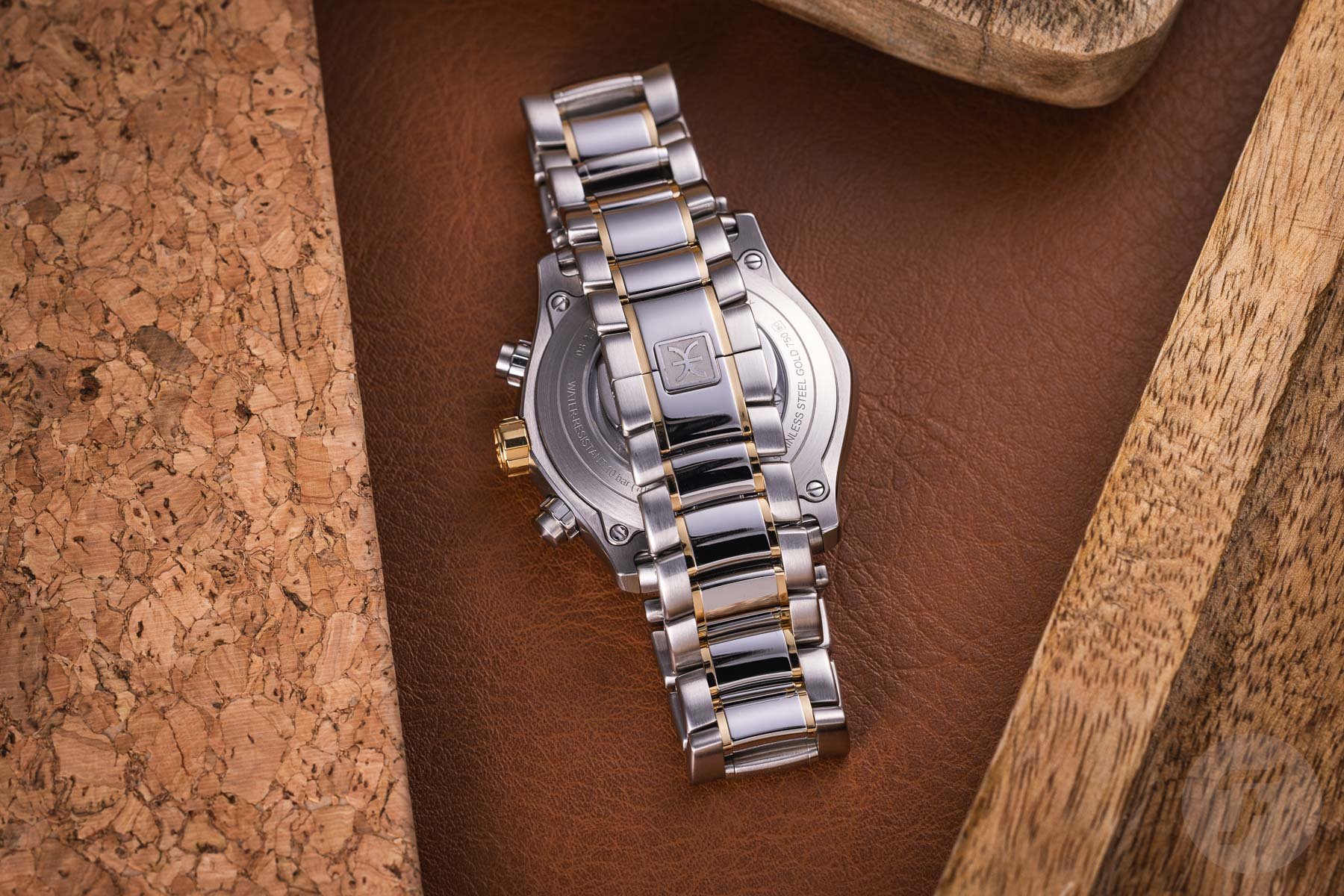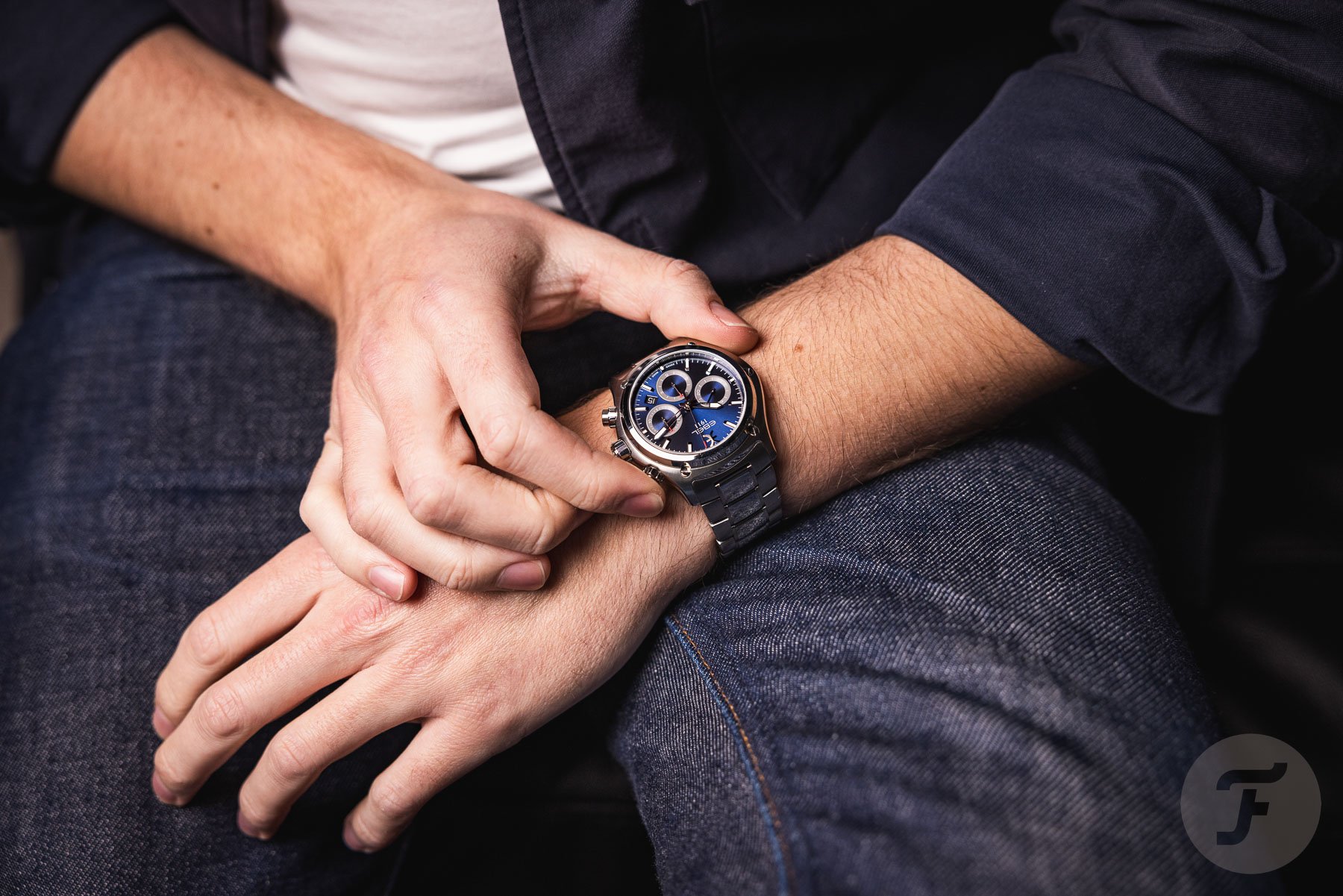The Ebel 1911 Chronograph Brings Back An Iconic Form
The Ebel 1911 Chronograph has returned, and the result is a modernized version of an immediately recognizable watch from the 1980s. I can’t help but feel slightly nostalgic when looking at these new pieces. It’s no longer a passé feeling, though, as I now see these Ebel pieces as enduring classics. We can argue later…
Ah, Ebel. It’s a brand that many of us recall from the ’80s and ’90s as one of the most popular on the market. With their distinctive, soft, hexagonal cases and amazing bracelets, these watches once battled quite victoriously against the likes of Rolex and Cartier for luxury supremacy. They were the thing in so much of the world and then, poof, Ebel seemed to disappear. It was as if modern ’80s design suddenly fell out of fashion, and Ebel was no longer in the spotlight. Frankly, I think that’s a shame, and it’s high time that the brand receives more credit. After all, the watches were beautifully constructed, expensively made, and available with mechanical movements in some forms.
The Ebel 1911 Chronograph
One hallmark model from the ’80s that featured a mechanical movement was the 1911 Chronograph. In its original form, many will recall that this watch used the El Primero automatic movement, and many even credit the brand for keeping this iconic caliber alive during some very dark days. After over five years of Robert-Jan and I discussing whether or not to buy a vintage model, he made the first move and grabbed one this summer. I followed suit about a month ago and added a very similar model to my stable, albeit with the multi-row 1911 bracelet. Folks, these watches are sublime on the wrist, and even though prices have crept up, they still represent insane value for money. So imagine my delight when I saw that Ebel was bringing a relatively faithful version of this watch back to market.
The modern 1911 Chronograph is immediately recognizable as an Ebel, and that’s a very good thing. The case shape, the bracelet, and the bezel with its trademark five screws are all on point. However, the watch adds modern touches that help it avoid looking like something from the set of Miami Vice. Whereas the original watches had Roman numerals for indices, a dressy handset, and dainty pushers, the new watch is decidedly more sporty. On the other hand, there’s no denying that the case and well-integrated bracelet come off as clean and elegant.
Ebel chose a 44mm stainless case for the new 1911 Chronograph and is offering the watch in two forms. An all-stainless model comes with a blue galvanic dial, while a two-tone model is paired with a black dial. Both watches will also come with a black calfskin strap. Regardless of the case diameter, the lug-to-lug is 49.6mm, so it should still work for those with medium-sized wrists (Thomas is our model for this article and has a 17cm wrist). Still, with the original coming in at 38mm, I think somewhere between 40 and 42mm would have qualified as a modern sweet spot.
Dial details
The Ebel 1911 Chronograph dials contain either rhodium-plated or yellow-gold-PVD-plated indices and hands. As mentioned, it’s a sportier look than the original model, and the addition of Super-LumiNova should provide ample visibility in low light. The sub-dials have gray inner rings that help bring the visual size down while adding a nice level of contrast. Similarly, red detailing on the two chronograph registers and hand tips brings functionality and legibility. Finally, the date window sits at four-thirty which will bother some, but it’s historically correct and unobtrusive. Overall, I think it’s a well-designed dial.
While the wave bracelet was and is an Ebel icon, the 1911 bracelet is probably among the most comfortable on the planet. It articulates beautifully and is as smooth as silk. Here, the 1911 Chronograph brings it back and pairs it with a push-button butterfly clasp. For those who will ask, there’s no micro-adjust mechanism on the clasp. Also, the intermediate links of the two-tone bracelet have a gold PVD plating. Importantly, however, the case does feature solid 18K yellow gold screws.
A reliable modern movement
Unsurprisingly, the El Primero does not make a return to the 1911 Chronograph. Thankfully, though, Ebel chose to use a mechanical caliber. The Sellita SW510a is on display via a display back. It boasts 62 hours of power reserve, hacking, and a quick-set date function. The movement plus case back contributes to a 13.65mm total case thickness, and the 100m water resistance rating is useful for everyday wear. As far as the controls, we have two beefier-looking pushers and a large-diameter crown. Note that the latter is also solid 18K gold on the two-tone model. Everything is quite tactile, easy to use, and in good proportion with the overall design.
Does Ebel have a pair of winners on its hands?
With consumers seemingly shifting their attention to watches from the ’80s and ’90s, it feels like the right time for an Ebel comeback. I’ve seen more of the brand’s watches in AD windows and have been peeking at the official website more often. The brand created one of the better and more distinctive designs of the past fifty years, so I hope for some sort of resurgence. And what of these new 1911 Chronograph models? Well, at €3,800 for the stainless version and €4,400 for the two-tone edition, I think they’re in the right ballpark. I do think a smaller case size would have resonated with more would-be buyers, but perhaps we’ll get an addition to the lineup in 2024. Are you ready for an Ebel revival, and do these chronographs tick the right boxes for you? Let us know in the comments below.

